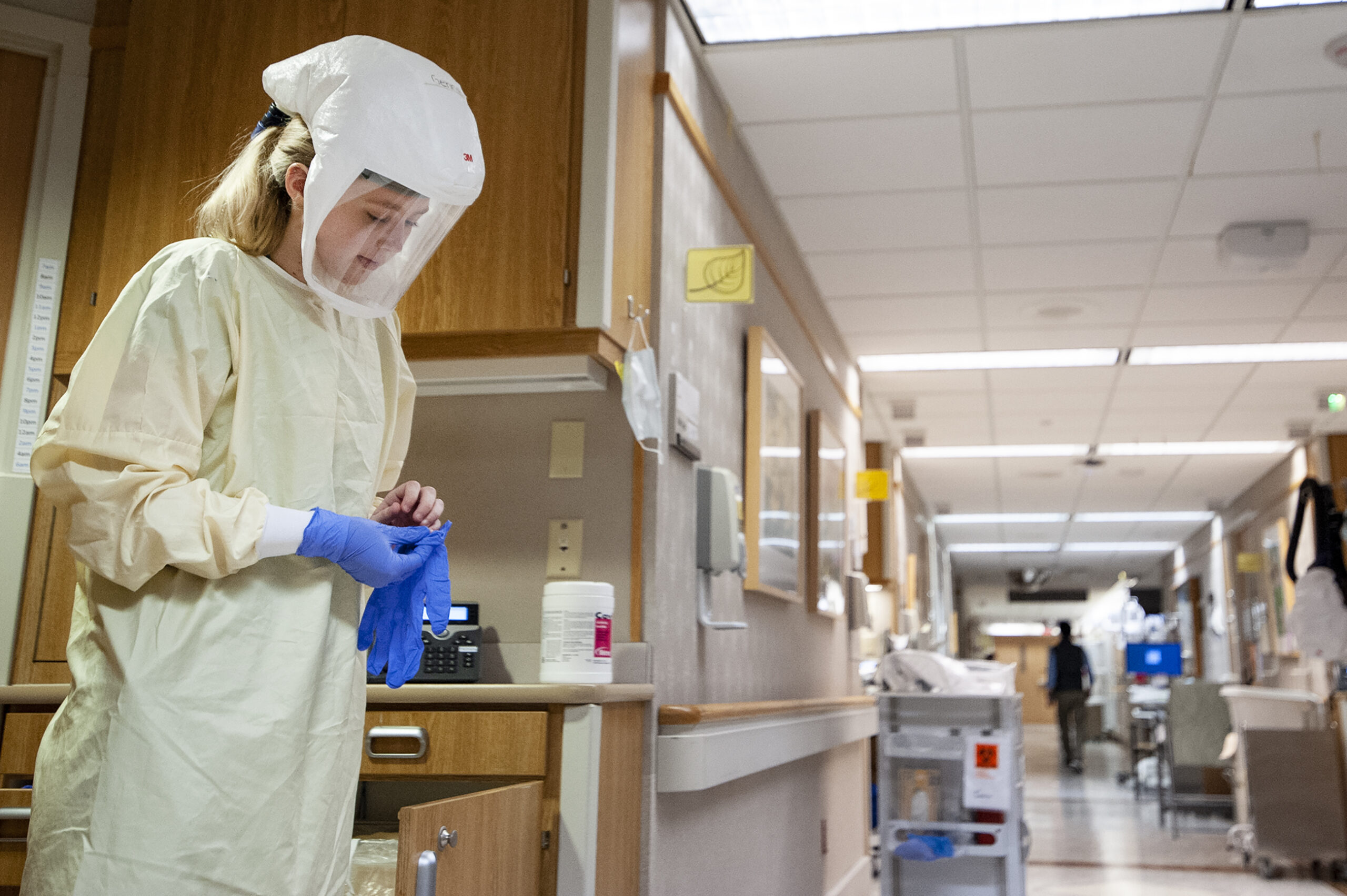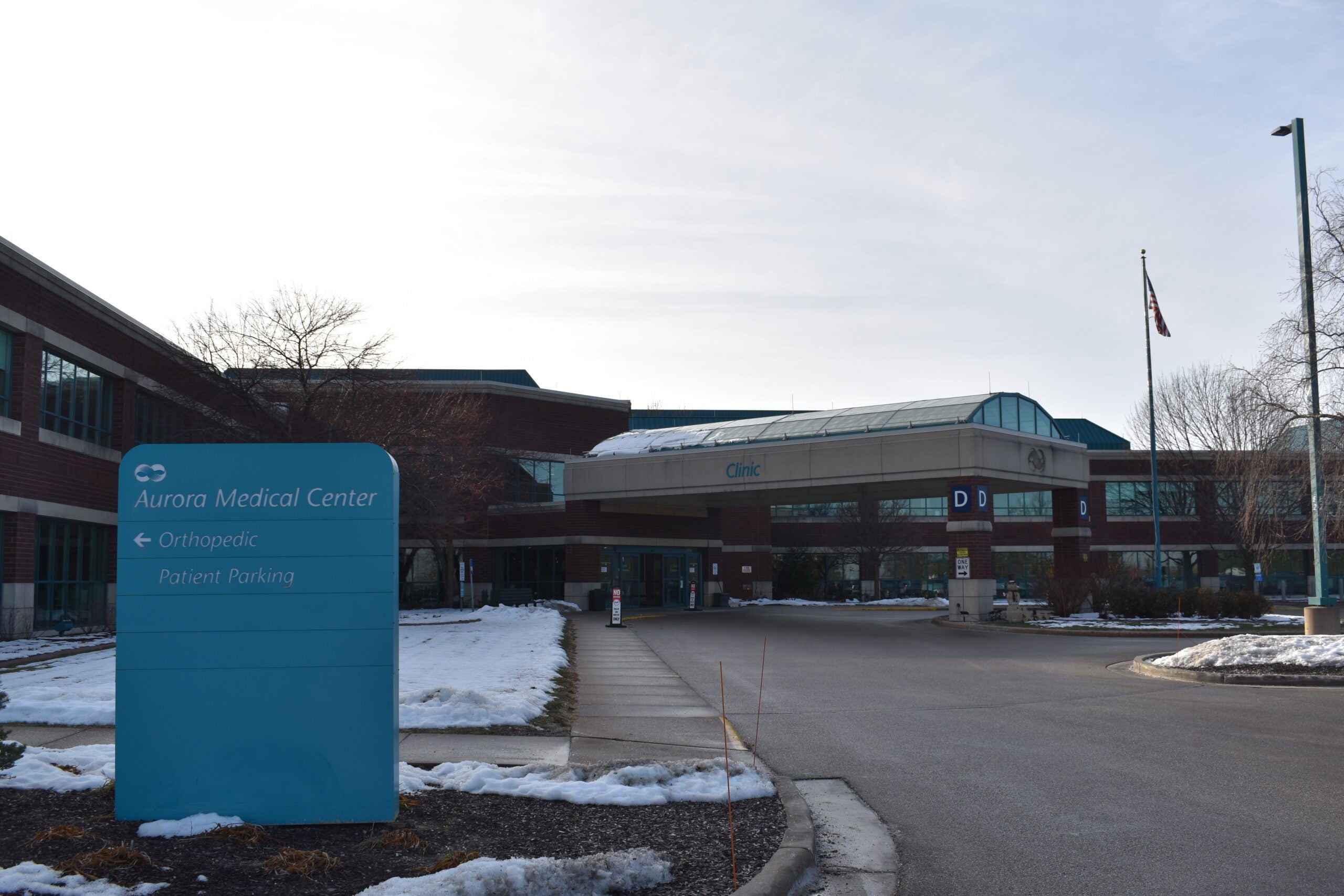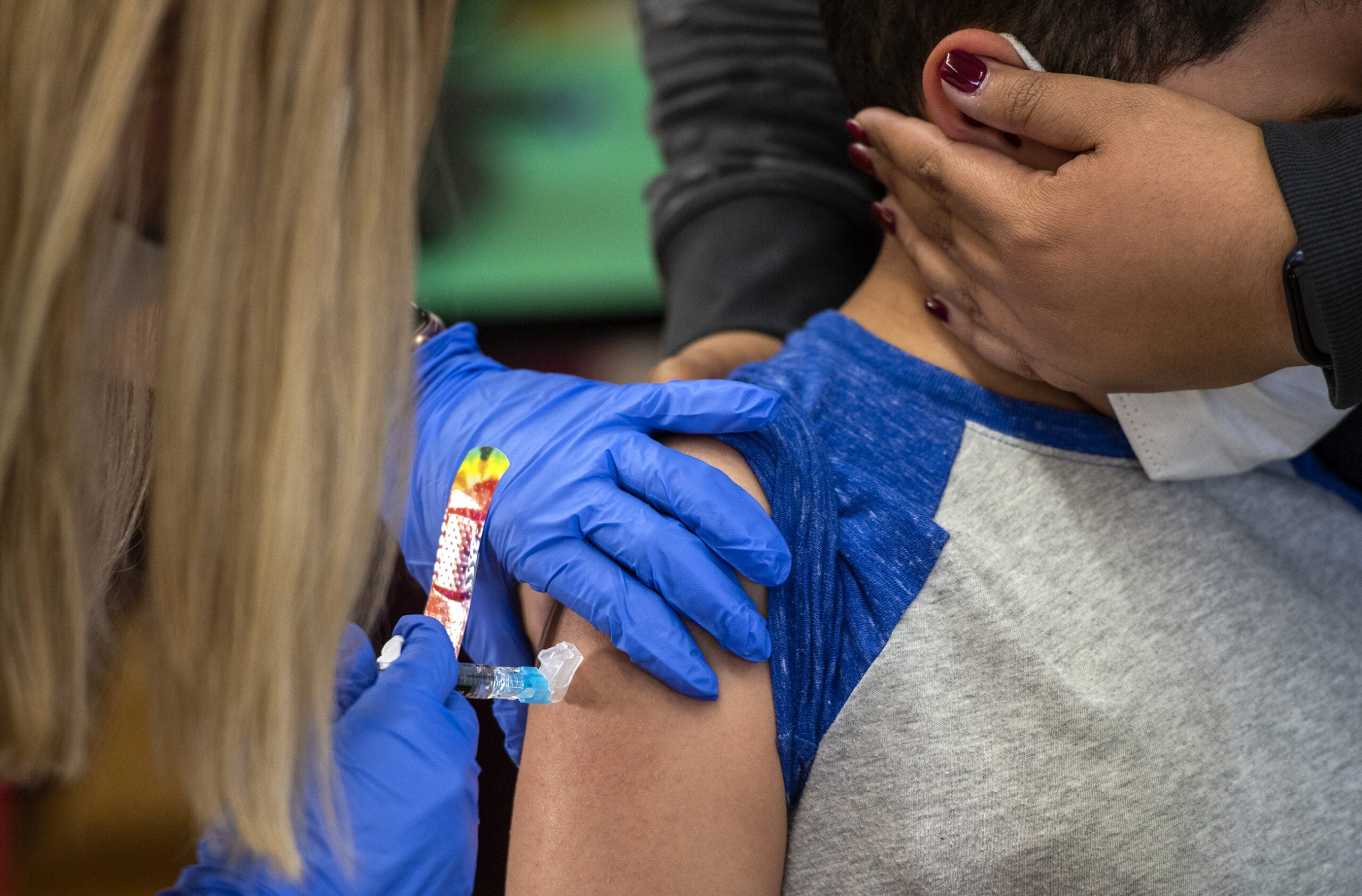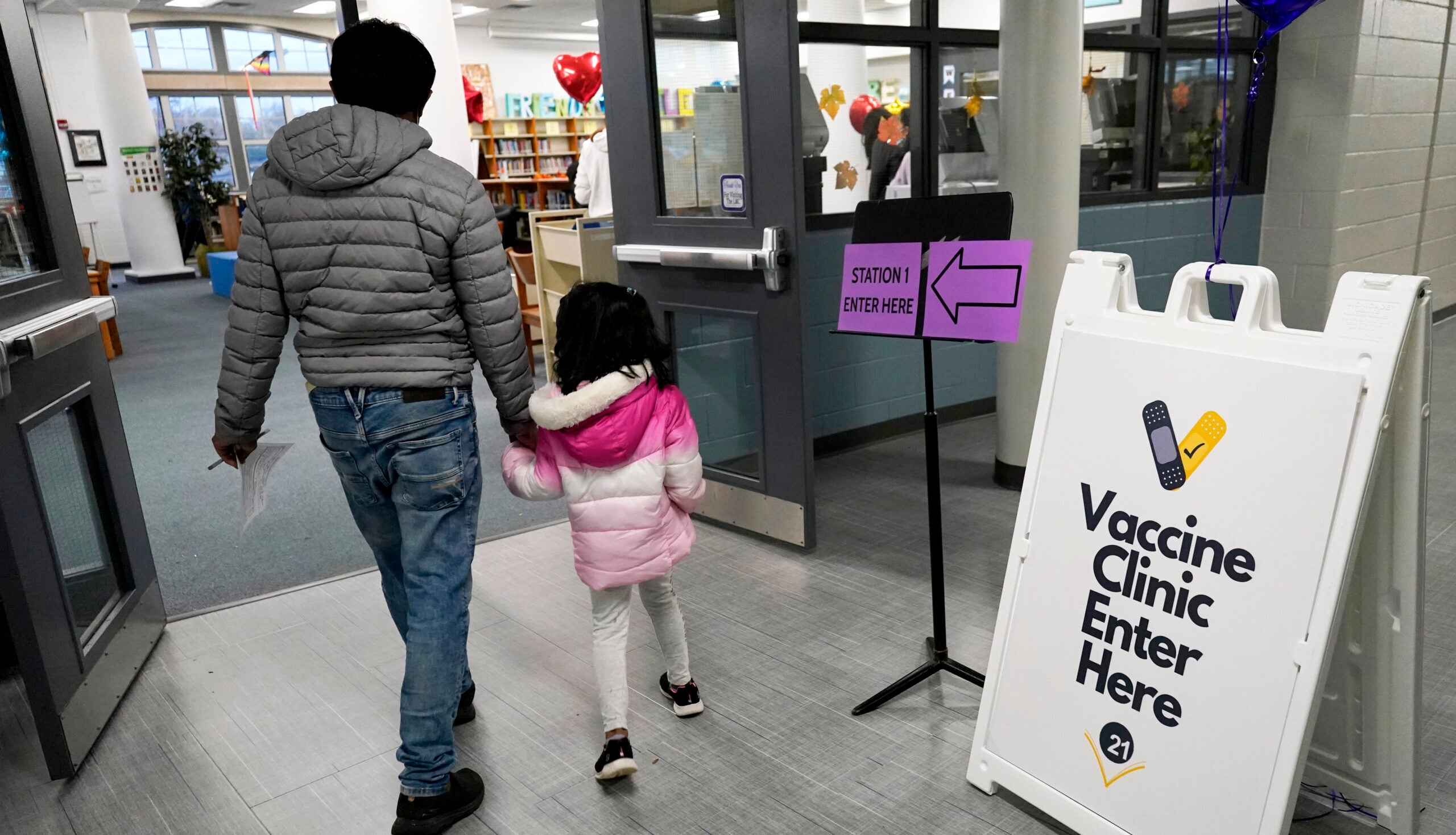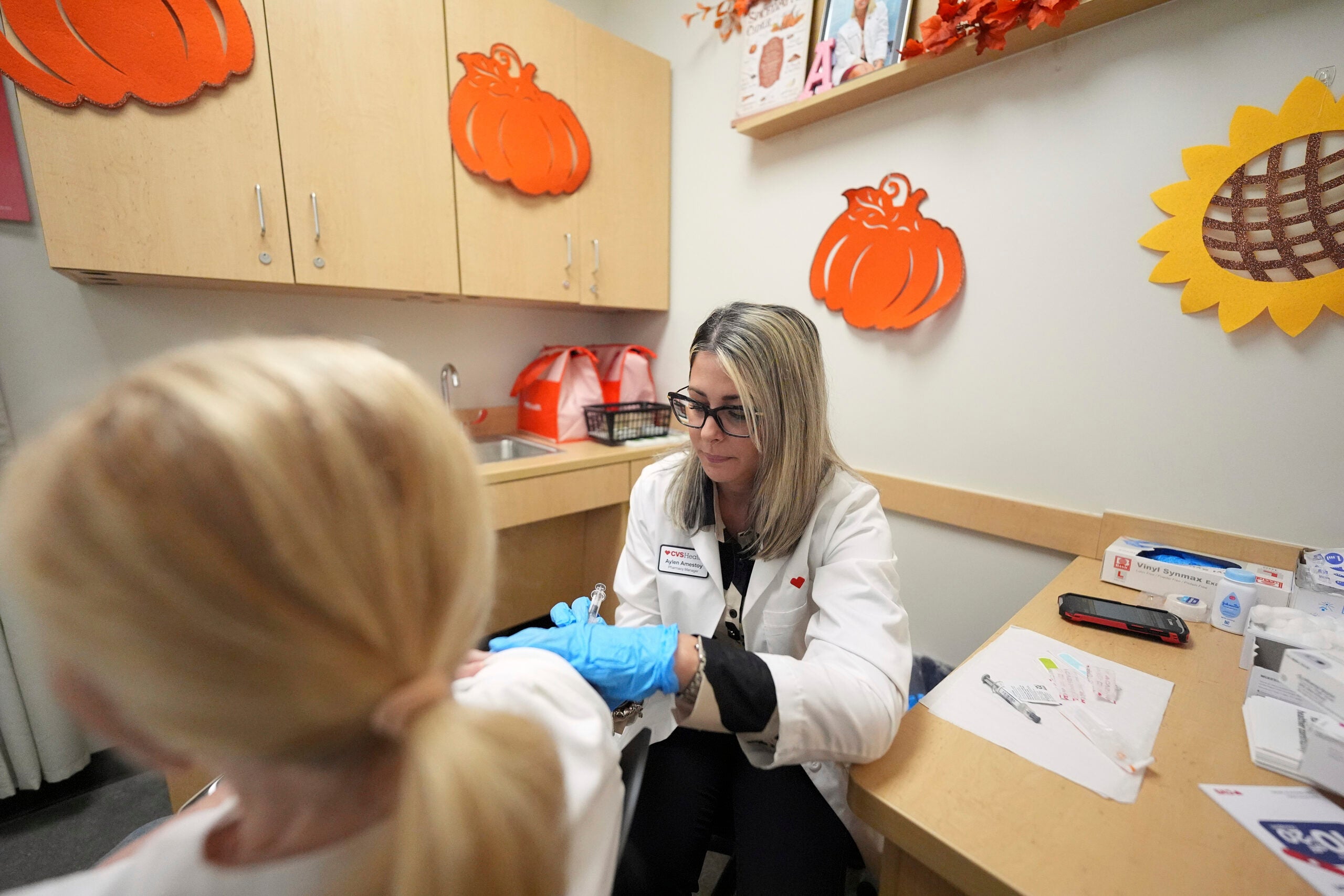COVID-19 infections are falling in Wisconsin, but it’s not happening quickly, according to Dr. John Raymond, president and CEO of the Medical College of Wisconsin.
The state experienced a spike in new infections in September spurred by the delta variant. But the return to levels seen before the surge has been “painfully slow,” Raymond said.
Wisconsin is averaging more than 1,900 new COVID-19 cases per day, according to the state’s Department of Health Services. That’s down considerably from September when the number climbed above 2,900. Still, it’s a far cry from June, when new infections dropped to double digits.
News with a little more humanity
WPR’s “Wisconsin Today” newsletter keeps you connected to the state you love without feeling overwhelmed. No paywall. No agenda. No corporate filter.
“Compared to other states, we’re lagging a little bit. The surge hit us a little later than other parts of the country and is abating a little bit later than it is in other parts of the country,” Raymond told reporters at a Milwaukee Press Club event on Tuesday.
COVID-19 hospitalizations are down, but Wisconsin hospitals remain crowded due to a combination of coronavirus cases and pent-up demand from earlier in the pandemic when people put off elective procedures and preventative care, Raymond said.
The state is averaging about 11 deaths per day. That number has held relatively steady in recent weeks. But when it comes to the data, death is the most lagging indicator, Raymond said.
Wisconsin is in the middle of the pack when it comes to vaccinations, with 55 percent of residents fully vaccinated, according to DHS. About half a million kids across the state will become eligible for the Pfizer shots in the coming days when they’re rolled out for children 5 to 11.
“Vaccinating our children is a deeply personal choice and one that parents take very seriously,” Raymond said.
While COVID-19 poses less of a severe risk to kids, it can cause multi inflammatory syndrome, persistent symptoms and even death, he said. Vaccinating children can also help protect any high-risk adults they may interact with, Raymond said.
Despite declining case rates and an expanding vaccination pool, Wisconsin isn’t out of the woods yet – especially with people moving indoors, school in session and the holidays approaching. But if Wisconsin does experience another surge in cases, it likely won’t be as severe as the last one, Raymond said.
He doesn’t anticipate it would happen until late winter unless there’s another variant. And the jury is out on the likelihood of that happening.
“We’re in the area of speculation about whether there’s going to be continuing emergence of more infectious variants. There’s a school of thought that would say that COVID-19 virus has mutated trillions of times, has tried to reinvent itself over and over again and may have reached the peak of its ability to infect people because there’s only a small stretch of amino acids that can be changed on that spike protein,” Raymond said.
But it’s too early to declare victory, he added.
Wisconsin Public Radio, © Copyright 2026, Board of Regents of the University of Wisconsin System and Wisconsin Educational Communications Board.
